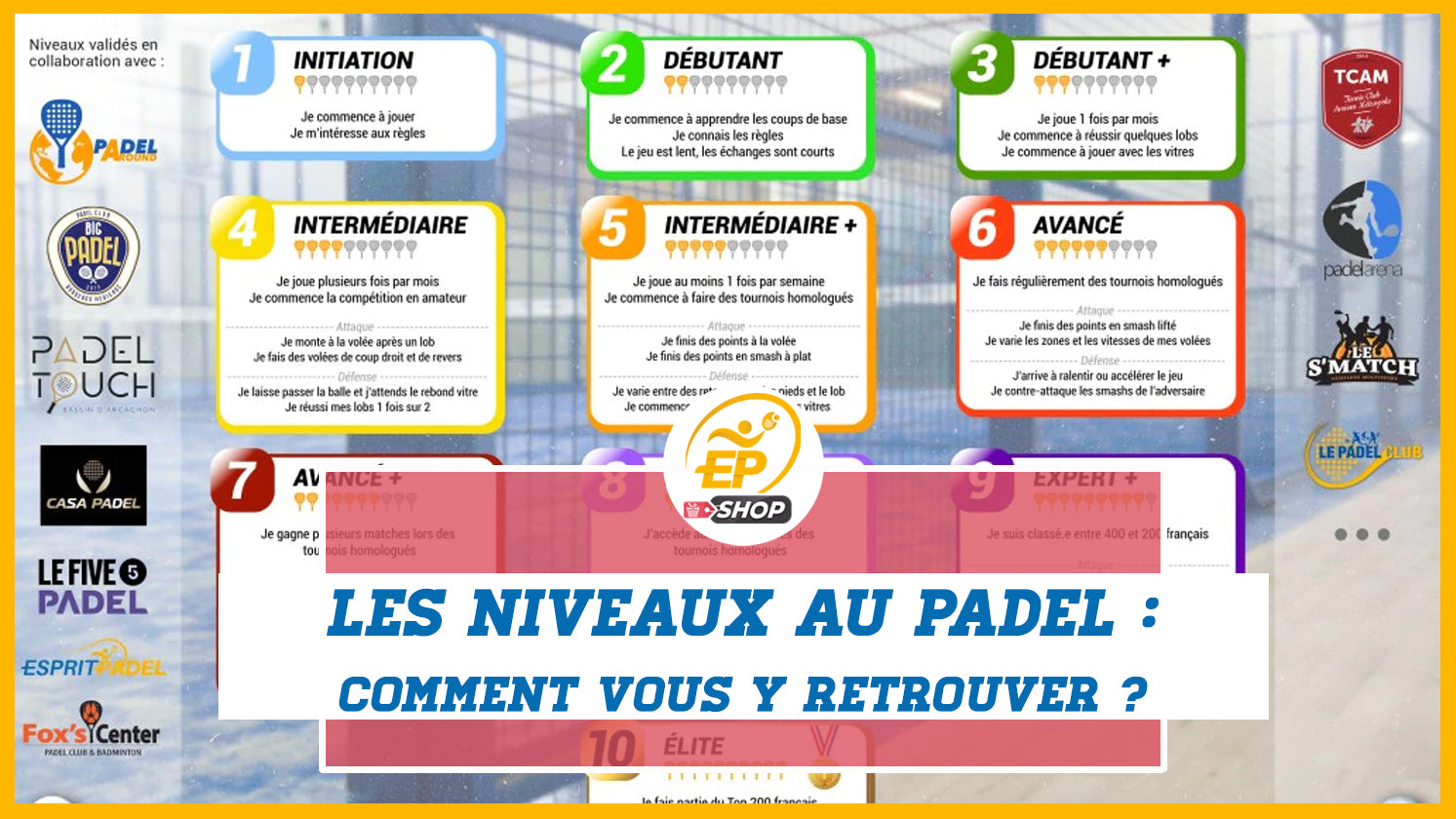Everyone knows, the Padel is a development sport that continues to increase in popularity, especially in France. Who says new development sport, says new classification system to “put away” players and allow them to create games with a homogeneous level. At Padel, two types of rankings exist: the approved national ranking, and the classification of 1 to 10 not approved. The latter was created from a simple observation: the majority of Padel practitioners do not make approved tournaments, so they had to create their own level scale.
Some French clubs then decided to set up a simple organization to allow everyone to find their way around. Simply classified from 1 to 10, Players can then be among the others and participate in balanced matches. Coaches most often attribute the levels to the people they then see no chance of cheating and overestimating you!

Levels 1 to 2: Initiation to Padel
Because we have to start somewhere, the first levels are given to beginners who are interested in rules but which affect a racket for the first time in their lives. The bullets are hesitant and the exchanges are short. In full apprenticeship, players start to learn the basis of the base: straight kicks, backhands and service. This is the level where we stay the shortest because the progression is fast.

Level 3: Beginner
The fundamentals are there, Basic blows are more or less controlled. The lobs and the use of windows begin to appear in the game, the particularities of the padel as the fact of not lifting as in tennis and playing more special blows begin to be assimilated. The game frequency for level 3 players is about 1 or 2 times a month.
Levels 4-5: confirmed level
For the confirmed level, the game frequency increases: between 3 and 5 times a month. The 4-5 levels are the tranche that have the greatest number of players, especially the ex-tennis players who start the padel. Basic blows are more and more controlled, and The blows used only at the Padel begin to be used. In attack, confirmed players go up on the fly after a lob and know how to finish the points on the fly by a flat flat or a specific blow, in a forehand as in reverse. On the defense side, the window rebounds are assimilated and the few double windows are returned. At 4-5 levels, some tournaments, including P25, can be made with good results (eighth, quarter or half-finals).
Levels 6-7: advanced level
Smash and finishes are insured and effective in lift to bother the opponent as much as possible. Some points are also finished by bringing the ball out of the court. But the biggest difference with the lower levels is the Adaptation capacity to the opponent's game. Returns in the feet, lobs, amortized, all these shots are mastered and begin to be used to destabilize the opponent according to his game and his physique. Advanced level players regularly participate in tournaments such as P100 and P250.
Level 8: Expert level
At level 8, all the Padel's blows are mastered, each blow is sent according to the opponent. In defense, double windows are returned regularly and counterattacks often hit the bull's eye. Expert players participate in many approved tournaments during the year, especially from the P500s where they regularly spend 2 laps.

Levels 9-10: Elite level
Elite players are among the best in French padel. Included in places 1 to 400 France, Elite players are technically impeccable. Their parts especially on the tactical side depending on the opposition. Regularly well placed in P500 tournament, sometimes in P1000, the 9-10 levels can start to be sponsored by Padel brands and why not earn money thanks to tournaments.

Note that it is the coaches of each club that attributes the levels. For example, the level of a 6 can vary depending on clubs and cities. We hope you can be among these levels and thus find the opponents that will allow you to progress. Don't forget to take a look at Padel Shop spirit To have the best equipment at the best price!

